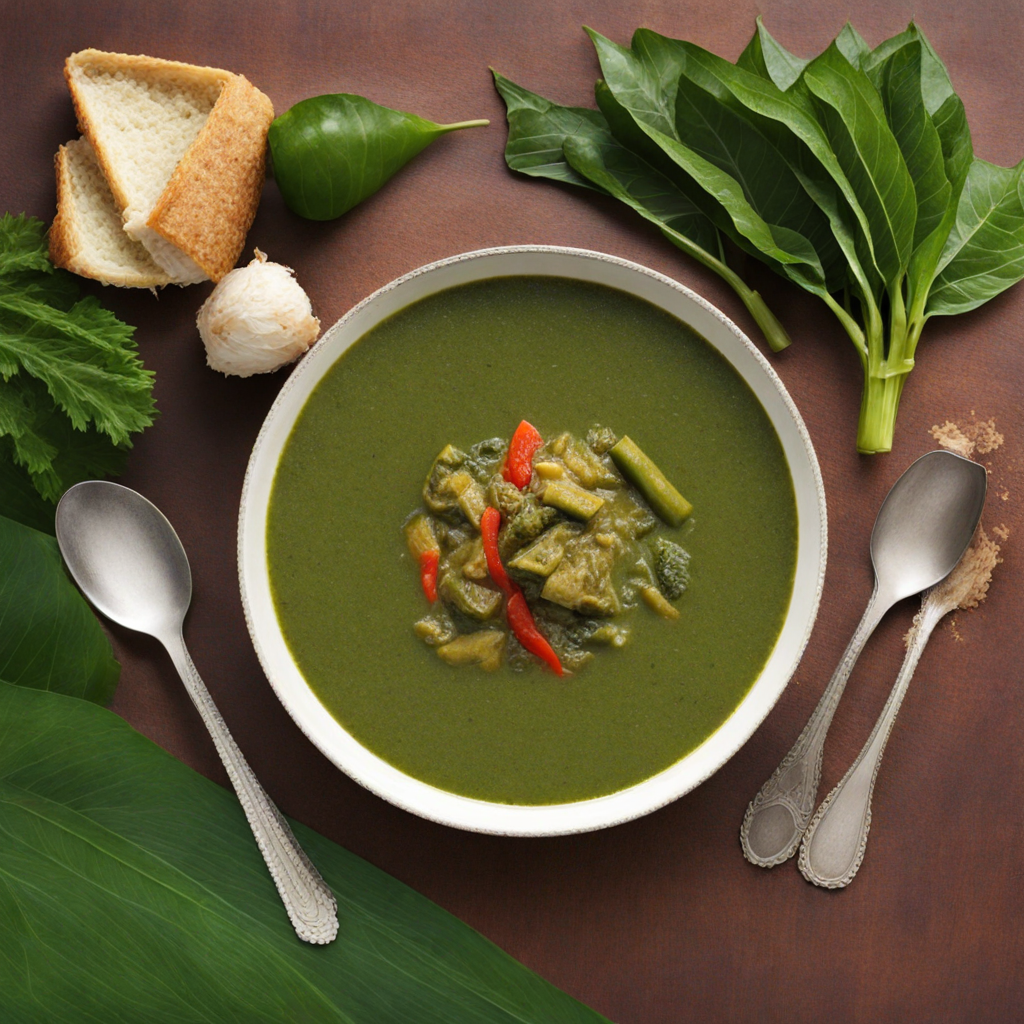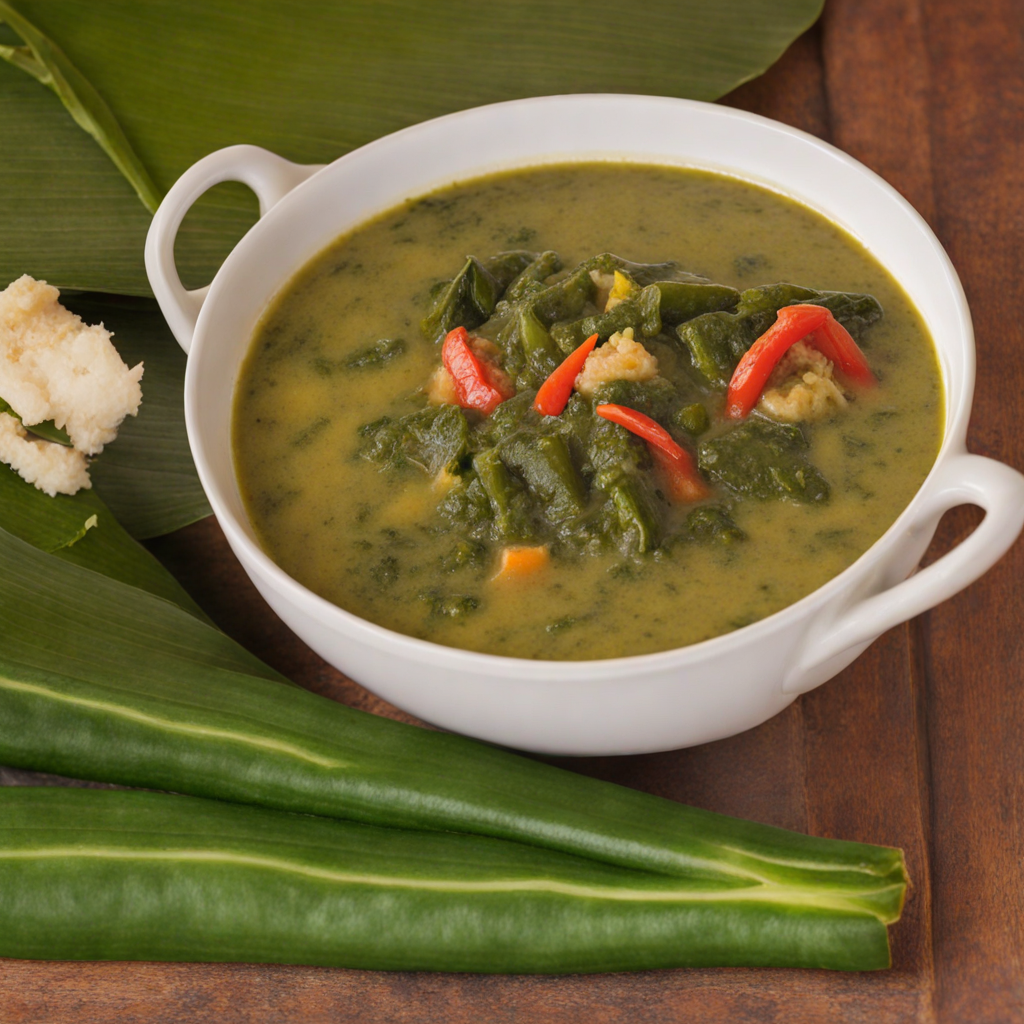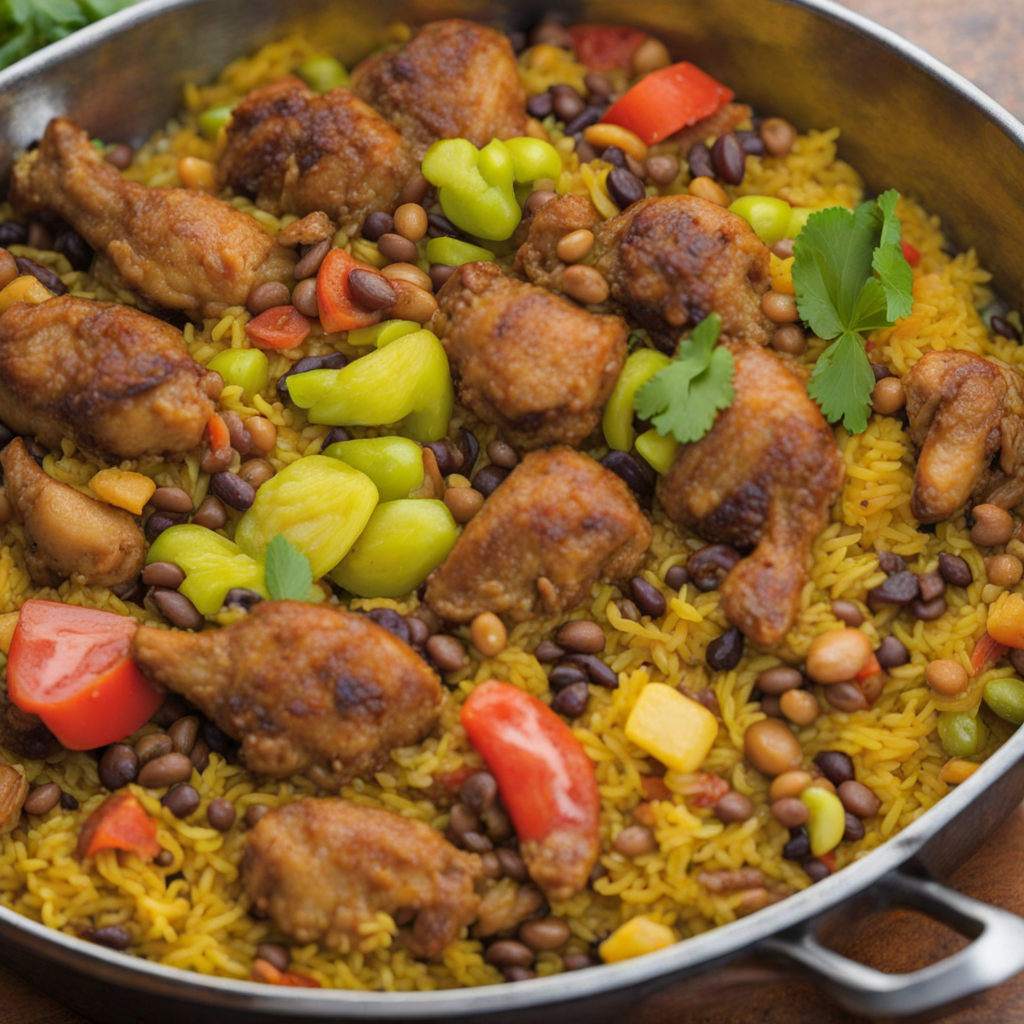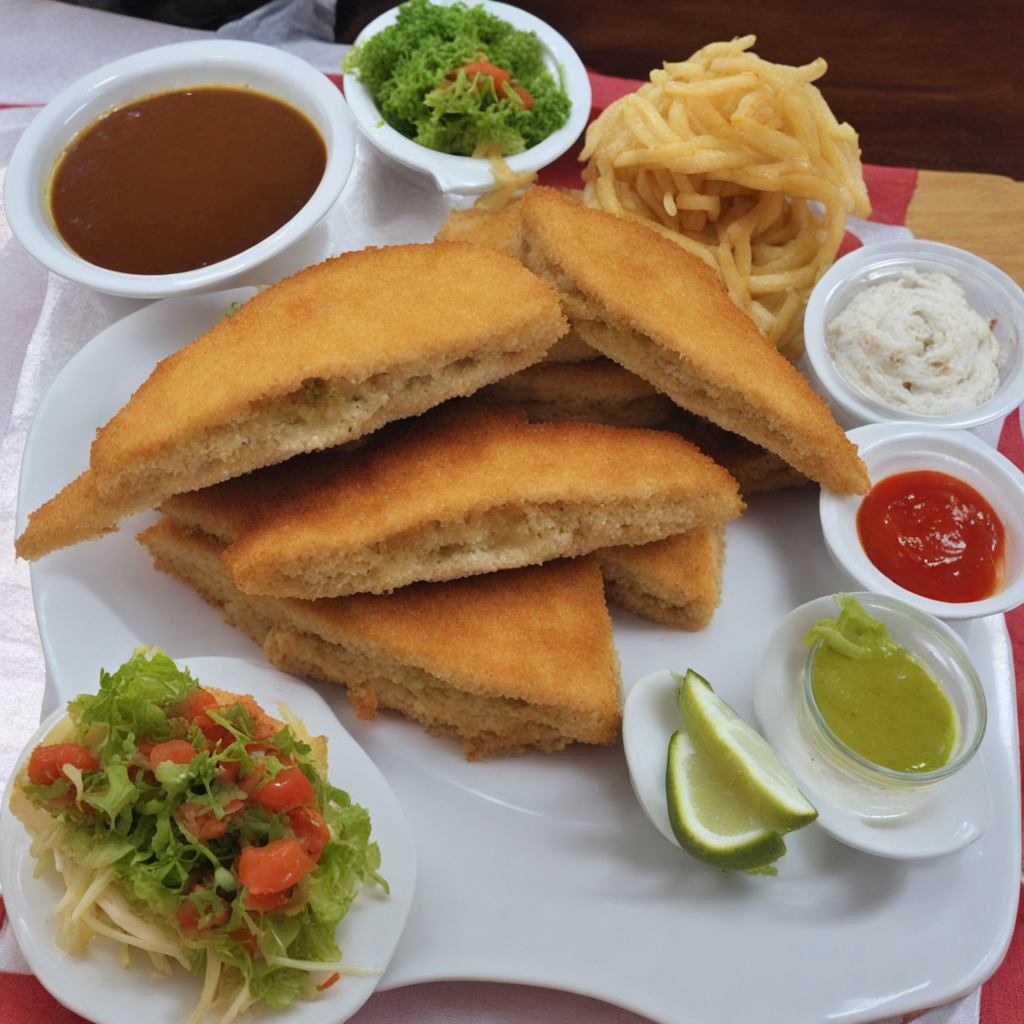Callaloo
Callaloo is a vibrant and flavorful dish that is a staple in the cuisine of Trinidad and Tobago. Primarily made with the leaves of the dasheen plant, a type of taro, callaloo is often cooked down until tender and combined with a medley of ingredients that enhance its rich, earthy flavor. The dish typically features ingredients such as onions, garlic, and peppers, which contribute a delightful aroma and a hint of warmth. Coconut milk is frequently added, creating a creamy texture that elevates the overall taste and provides a subtle sweetness, making each bite a delightful experience. The versatility of callaloo is one of its most appealing aspects. While the base remains consistent, variations exist that incorporate different proteins such as crab, salted meats, or even shrimp, adding depth and complexity to the dish. This adaptability allows home cooks to personalize the recipe according to their preferences and local ingredients, resulting in unique versions that reflect the diverse culinary heritage of the Caribbean. The addition of spices such as thyme and scallions further enhances its flavor profile, making it a dish that can be enjoyed on its own or served as a side to complement a variety of meals. In Trinidad and Tobago, callaloo is often enjoyed during festive occasions, served alongside dishes like rice, fried plantains, or baked goods. Its rich, green color and luscious texture make it visually appealing, while its comforting, hearty nature makes it a crowd-pleaser. Whether you're experiencing it for the first time or revisiting this beloved dish, callaloo is more than just a meal; it embodies the warmth and vibrancy of Caribbean culture, inviting you to savor its rich flavors and discover the stories woven into every bite.
How It Became This Dish
The History of Callaloo in Trinidad and Tobago Callaloo is a dish that has transcended generations and cultural boundaries, becoming a staple in the culinary landscape of Trinidad and Tobago. With its vibrant green hue and rich, creamy texture, callaloo is not just a meal but a cultural emblem, deeply rooted in the islands’ history, traditions, and the diverse influences that have shaped Caribbean cuisine. #### Origins of Callaloo The origins of callaloo can be traced back to West Africa, where a similar dish made from leafy greens was enjoyed by the enslaved people who were brought to the Caribbean during the transatlantic slave trade. The term "callaloo" itself is believed to derive from the African word "calalu," referring to the leaves of the amaranth plant, a green leafy vegetable that was a staple in many African diets. As enslaved Africans arrived in Trinidad and Tobago, they brought with them their culinary traditions, which blended with the indigenous ingredients and cooking techniques of the region. The callaloo dish began to evolve, incorporating local ingredients such as dasheen leaves (taro leaves), okra, and coconut milk, creating a unique fusion that reflects the melting pot of cultures in the Caribbean. #### Cultural Significance Callaloo is more than just a dish; it is a symbol of resilience, resourcefulness, and community. Traditionally, it is served at significant gatherings and celebrations, including weddings, funerals, and festivals. In Trinidad and Tobago, callaloo is often associated with Sunday family meals, where it is served alongside other local dishes like rice and peas, fried plantains, or stewed meats. The dish also holds a special place in the culinary practices of the Afro-Trinidadian community, where it is often prepared as a way to honor ancestral traditions. Callaloo has become emblematic of the Trinidadian identity, representing the island's rich history of cultural blending. The practice of sharing a pot of callaloo serves as a reminder of community bonds and the importance of family, both of which are central to the Caribbean way of life. #### Development Over Time As Trinidad and Tobago progressed through the 19th and 20th centuries, the preparation and ingredients of callaloo continued to evolve. The dish began to gain popularity beyond the Afro-Trinidadian community, attracting the attention of other ethnic groups on the islands, including East Indian, Chinese, and European populations. Each group contributed its twist to the recipe, incorporating spices and techniques from their culinary traditions. The East Indian influence is particularly noteworthy, as many East Indian immigrants settled in Trinidad during the late 19th and early 20th centuries, bringing with them an array of spices and cooking methods. The use of curry spices in callaloo became popularized, leading to variations that featured a medley of flavors. This adaptability highlights the dish’s role as a canvas for cultural expression, reflecting the diverse palate of Trinidad and Tobago. In addition to the various spices, the ingredient list for callaloo expanded to include ingredients like crab, shrimp, or salted fish, which added richness and depth to the dish. As seafood became more accessible, coastal communities began incorporating local catches into the recipe, further enhancing its flavors and nutritional value. In the latter half of the 20th century, callaloo gained increased recognition as a symbol of Trinidadian cuisine on the global stage. With the rise of Caribbean restaurants and culinary tourism, callaloo became a must-try dish for visitors seeking an authentic taste of the islands. Its popularity began to spread internationally, with Trinidadians living abroad introducing it to new audiences. #### Modern Interpretations In contemporary Trinidadian cuisine, callaloo has maintained its traditional roots while also embracing modern culinary trends. Chefs and home cooks alike are experimenting with innovative presentations and fusion styles. For instance, some serve callaloo as a filling for pastries or as a base for gourmet plates, showcasing the dish's versatility. Health-conscious trends have also influenced the way callaloo is prepared. Individuals are increasingly recognizing the nutritional benefits of the dish, as it is rich in vitamins, minerals, and antioxidants. Callaloo leaves are packed with nutrients, making the dish a popular choice for those interested in healthy eating. As a result, variations that emphasize vegetarian or vegan preparations have emerged, appealing to a broader audience. Additionally, callaloo has been embraced in various forms of media, from cookbooks to television shows, further elevating its status as a cultural icon. Food festivals often feature callaloo as a highlight, celebrating its heritage and the culinary talents of Trinidadians. This exposure has helped the dish maintain its relevance and popularity in an ever-evolving culinary landscape. #### Conclusion Callaloo is a dish that encapsulates the essence of Trinidad and Tobago's rich history, cultural diversity, and culinary evolution. From its African roots to its modern interpretations, callaloo has remained a beloved staple, embodying the spirit of community, resilience, and adaptability. As Trinidadians continue to cherish and innovate this dish, callaloo will undoubtedly remain a significant part of the islands' culinary heritage, a testament to the enduring power of food to connect people across generations and cultures. Whether enjoyed at a family gathering, a festive celebration, or a local restaurant, callaloo serves as a delicious reminder of the vibrant tapestry that is Trinidad and Tobago's culinary identity.
You may like
Discover local flavors from Trinidad And Tobago







